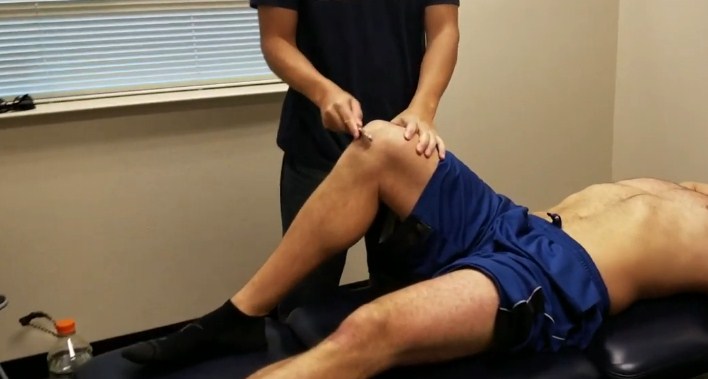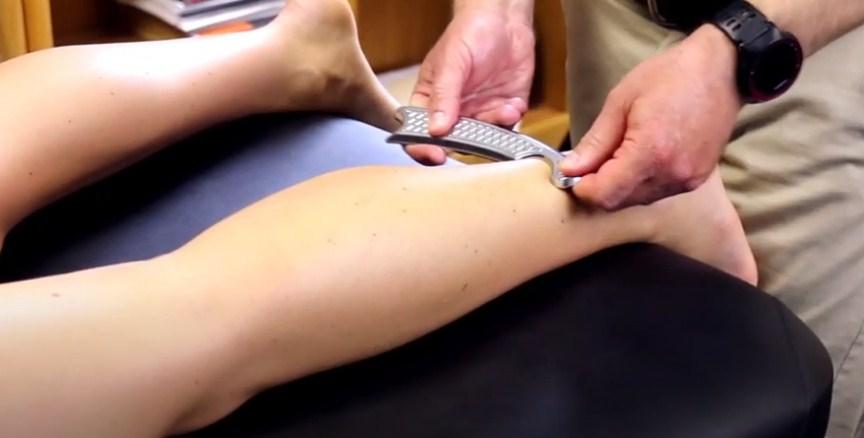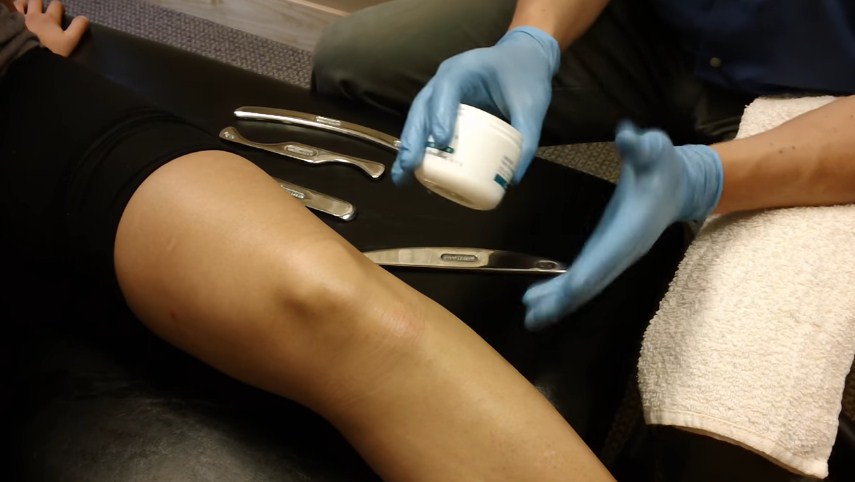How Does Graston Technique Work for Muscle Scraping
Basically, you will see 6 core tools that are usually used in Graston Technique practically and they are mainly made of stainless steel and are concave and convex-shaped.
Most of them have rounded edges and are not sharp in shape.
During the graston technique process, those instruments are used to scan over and detect areas of injured fibrotic tissue.
The main point of this process is to design to both identify the injured areas and give needed the best treatment to them.

Types of Graston Techniques: Traditional vs Modern
1. Traditional Graston Techniques
Traditional graston techniques usually use traditional metal instruments such as needles, pins and hot stones.
Long time ago, these methods were originally developed in China, then they have been brought and practiced since at least the 3rd century BC, in which India, Japan and Korea still use these methods.
Traditional graston techniques can be said as Acupuncture that is a popular treatment used to address and to relieve pain symptoms such as back pain and osteoarthritis with the use of needles.
As you might have known that Acupuncture mainly uses very thin needles applied into acupuncture points in your body then stimulated using a variety of techniques such as heat or manual stimulation or needling.
2. Modern Graston Techniques
Modern Graston Techniques use new technology to heal injured spots of the body.
Instead of using needles or hot stones, modern graston techniques use specially designed instruments which are also known as graston tools
These tools later on are used to help improve blood flow, break down scar tissue and treat trigger points in the body.
Modern graston techniques use tools to rub and scratch at the skin to increase blood flow in the region and get your body’s natural healing process started.
The main point of using these techniques is to improve the flexibility and effectiveness of a graston treatment.
Once again, using these treatment options can be used to help treat a range of different conditions such as tendonitis, carpal tunnel syndrome and shin splints.
Today, there are a lot of types of graston tools on the market where those tools are mostly designed to focus on a particular area of the body such as the back, neck and knees.
Who Needs and Applies Graston Technique
Graston techniques can be performed by well trained acupuncturists and physical therapists.
Besides, some chiropractors, osteopathic physicians, physical and occupational therapists, and athletic trainers also used this technique to heal their clients.
Also, medical doctors, registered nurses and licensed massage therapists are available to apply this technique.
But, today anyone will be able to do this technique by their own self with the right graston tools that will be explained here
As you have read from the previous paragraph, some acupuncturists use traditional graston techniques to stimulate pressure points on the body.
Meanwhile, physical therapists use modern graston techniques to improve muscle flexibility and break down scar tissue.
Here, physical therapists perform effective graston techniques as part of a rehabilitation program or therapy for those who have suffered from strokes, cancer, joint replacements or spinal cord injuries.
Performing physical therapy with graston techniques result in many proven benefits, in which some physical therapists must use special graston tools during their treatment sessions.
As said earlier in the first paragraph, some graston tools can be used to help break down scar tissue and relieve muscle tension
In the past, some people would have to go outside to experience graston technique methods.
Now, with the rise of alternative medicine, most people today are turning to graston techniques as a way to get relief from their chronic pain.
For anyone who has arthritis, migraines or back pain, consider trying graston technique for himself at home.

Graston Techniques Benefits for Muscle Therapy
After checking out what this graston techniques may have side effect for some people, there are also some positive effect that you can get with this technique
In general, the graston therapy is generally designed to treat soft tissue-related conditions, such as lower back muscle strain.
Related to this, if you have an injury within the soft tissue occurs, the tissue repairs itself in a haphazard pattern, forming scar tissue.
If the scar tissue itself is not painful, it tends to limit range of motion, which will result in ongoing stiffness leading to chronic pain.
You may wonder how this graston technique has given the best result for some people loving massage as therapy for their treatment
- It may decrease overall time of treatment compared to surgery
It fosters faster rehabilitation and recovery with minimum risk compared to surgery treatment - It reduces the need for anti-inflammatory medication in the short time
- It resolves chronic conditions thought to be permanent
Potential Results of Incorporating Graston Technique into Treatment - It has resolved 87% or more of all conditions treated.
- It is equally effective in restoring function to acute and chronic injuries, and pre- and post-surgical patients.
Moreover, a neurologic benefit will be felt if you do the Graston Technique Instruments well.
If you do manual or Instrument Assisted Soft Tissue Mobilization aka IASTM therapy, you may feel that certain nerve fibers are activated in that area.
Plus, your body’s position sense organs, such as mechanoreceptors and proprioceptors, will likely respond to these forms of treatment.

Moxibustion for Graston Technique
Moxibustion is another treatment option in which this is usually used alongside graston techniques.
Moxibustion is a traditional Chinese medicine technique applying the burning of mugwort, a small, spongy herb, which is useful to strengthen the blood, stimulate the flow of qi, and maintain general health
In this technique, moxa also known as mugwort is usually used to warm an acupuncture point which can be done by holding a cigarlike stick of moxa against the skin for several seconds.
Applying such techniques will increase blood flow to the region and help promote healing in the body.
Besides, Moxibustion often uses a heating device or an electrified needle as a therapy process.
In the process, the physical therapists usually use moxibustion and graston technique together to treat patients with chronic pain.
PROS
You DO need to try the graston technique, if you want to treat acute and chronic conditions such as:
- Getting lower back muscle strain or sprain
- Getting achilles tendinosis
- Getting carpal tunnel syndrome
- Getting cervical sprain or strain
- Getting plantar fasciitis
- Getting rotator cuff tendinosis
- Getting shin splints
- Getting tennis or golfer’s elbow
On the contrary, some people with pain from soft-tissue injury are not the ones who need to do the graston technique.
It can be said that the graston technique should not be used to anyone with any condition contraindicated for soft-tissue mobilization.
CONS
You DON`T apply the graston technique as the treatment if you experience the following conditions as follows:
- Having open wounds around the area to be treated
- Having high blood pressure
- Cancer depending on the type and location
- For pregnant women should avoid getting the graston therapy to over the spine, pelvis, abdomen, or along certain acupuncture points
- Having unhealed or complicated fractures.
- Having certain types of kidney disorders
- Having blood thinners